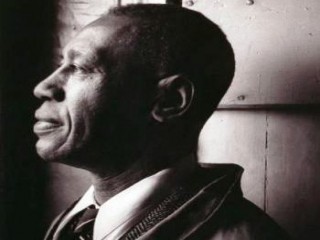
Horace Pippin biography
Date of birth : 1888-02-22
Date of death : 1946-07-06
Birthplace : West Chester, Pennsylvania
Nationality : African-American
Category : Arts and Entertainment
Last modified : 2011-06-27
Credited as : Artist painter, naive style,
Horace Pippin was born in West Chester, Pa. According to his own account, he began to make pictures at the age of 7. In 1895 he went with his mother to Goshen, N.Y., where he attended school. At 14 he was employed doing odd jobs on a farm; a year later he began unloading coal for a living. In 1912 he took a job in a storage warehouse. He enlisted in the Army in 1917 and was sent to France, where he was badly wounded. He was honorably discharged from the infantry in 1919 and married the following year.
In the 1920s Pippin revived his interest in art. In 1930 he painted his first oil, End of the War: Starting Home, a World War I scene. Christian Brinton discovered Pippin's work in 1937 and arranged for a one-man exhibition at the West Chester Community Center. In 1940 Pippin attended classes at the Barnes Foundation in Merion, Pa., the only formal art education he received. That year Albert C. Barnes wrote the introduction to the catalog of the Pippin show held in Philadelphia.
In his portrait of Paul B. Dague, the deputy sheriff of West Chester County (1936), Pippin scrupulously included various insignia—buttons, a medal, seal, and gavel—all indicative of the sitter's position of authority. Pippin sometimes borrowed from other sources, such as calendar illustrations. His Woman at Samaria (1940) was mostly modeled on an old book engraving, but the blood-red sky may have been inspired by his own memory of a sunset. In the 1940s he became freer and more inventive in his use of colors, as in the portrait of Christian Brinton (1940), where a rich color pattern is used for the necktie and the handkerchief folded in the jacket pocket.
Three canvases (1942) commemorate the saga of the antislavery activist John Brown: the Trial of John Brown, John Brown Reading His Bible, and John Brown Going to His Hanging. In 1943 Pippin painted a grim Crucifixion. But many of his works have a poetic, intimate quality, such as Saying Prayers (1943), in which two children, about to go to bed, kneel beside their mother. Here, as in much of Pippin's work, there is an instinctive feeling for design; the door, window, large stove, and leaning umbrella are powerful forms, geometrically reduced.
Very little of Pippin's work has to do with social protest or with historical events. He loved to paint the simple things he knew best—interior scenes showing the tenderness of members of a family toward one another, still lifes, and people working together on a farm.



















